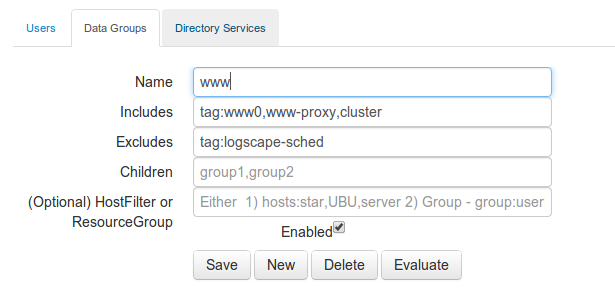Data Groups are used to organise access to your data and provide workspaces local to a group of users. A user belonging to a datagroup will have access to the data defined in that datagroup. Belonging to a data group also means that a user will see Searches and Workspaces in that data group. All user activity will be available only to users in that data group.
Data groups allow data to be used and reused by different teams in different ways all from one tool.

The includes option is a list of tags or datasource. It has the following syntax:
tag:DATASOURCE
File mask can also be used here to
Provide a list of tags to exclude. This follows the syntax of the includes options show above. File masks can be used to exclude files too. An example is listed below where all password files are excluded.
tag:pwd,passwords
Other Datagroups can be added to created child groups. The nested groups can be mapped to organisational structures like departments and teams, or geographical regions or data centers. Data groups can be used to model complex hierarchical relationships that reflect what makes sense in a particular deployment. In the option children provide a list of datagroups to be nested within the current datagroup.
group:DATAGROUP
A datagroup can be restricted to a list of hosts or resources defined by a resourceGroup. The syntax to include data from a list of hosts is:
hosts:HOSTA,HOSTB,....HOSTN
The full hostname or a substring can be used to match hosts to be included. Resource filters can also be used.
group:resourceGroup1,resourceGroup2This will match a list of resources defined by a resource query. Resource queries are explained on the Agents page.
All the users in the system are list in the table below. The Administrator can

Groups can be enabled or disabled.